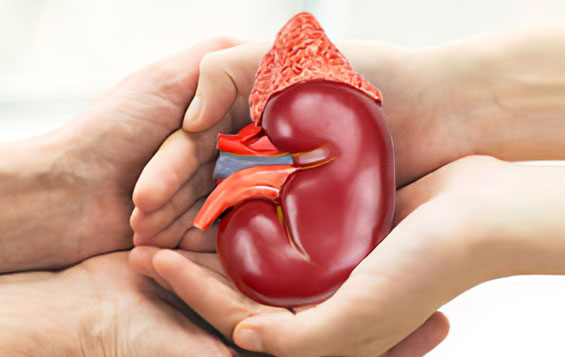
Kidney transplant is an alternative form of therapy to dialysis. Patients who are interested in this form of therapy and who have received medical approval are considered as potential candidates for a living related or deceased donor transplant. To attain medical approval active coordination is maintained with the transplant facilities.
The transplant coordinator at Central Florida Kidney Centers, Inc. meets with patients and interested family members to explain and educate potential recipients and donors about the transplant process. The option for the patient to access transplant programs in other regions is available. Information can be obtained about transplant programs in other states as well as other cities in Florida. Records are kept updated to maintain the patients status on the transplant registry after being accepted as a transplant candidate.
Through written and audiovisual presentations, patient and family education is provided regarding the alternative of transplantation and the potential health benefits and risks. Patients and living related donors are assisted with scheduling the necessary appointments and tests required for the pre-transplant workup process.
National Institute of Diabetes & Digestive & Kidney Diseases
United Network for Kidney Sharing

Nearly 100,000 people are on the waiting list for a kidney transplant. Many more people are waiting for a kidney than for all other organs combined. Unfortunately, the number of people waiting for kidneys is much larger than the number of available kidneys from living and deceased donors. You can save a life by being a kidney donor.
If you have two healthy kidneys, you may be able to donate one of your kidneys to enhance or save someone else’s life. Both you and the recipient of your kidney (the person who got your kidney) can live with just one healthy kidney.
If you are interested in living kidney donation:
Another way to donate a kidney while you are alive is to give a kidney to someone you do not necessarily know. This is called living non-directed donation. If you are interested in donating a kidney to someone you do not know, the transplant center might ask you to donate a kidney when you are a match for someone who is waiting for a kidney in your area, or as part of kidney paired donation. You will never be forced to donate.
There is no doubt that being a living donor is a huge benefit to the recipient (the person who gets your kidney). Recipients of a living donor kidney usually live longer, healthier lives compared to those who receive a deceased donor kidney (a kidney from someone who has just died). It is important to recognize there can be benefits to the donor, as well. Some of these are:
As a kidney donor, your risk of having kidney failure later in your life is not any higher than it is for someone in the general population of a similar age, sex or race.
On average, donors have 25-35% permanent loss of kidney function after surgery.
It is important to recognize that there are risks with any type of surgery, which the transplant team will explain to you in detail. Some of these include:
Some people who donate an organ may experience anxiety, depression, or fear after the surgery. Financial stress can also come as a result of donation, as you may need to take time off from work. Talk to the transplant team during the evaluation process to find ways to manage these stresses.
If you want to be a living donor, you will need to have a medical exam with blood tests to be sure you are healthy enough to donate a kidney. Some of the tests needed may include:
You are also required to meet with a psychologist and an Independent Living Donor Advocate to be sure you are mentally and emotionally ready to donate one of your kidneys.
If you are found to be healthy, and your antibodies and blood type are well-matched to the person getting your kidney, you may be approved to donate your kidney.
Most kidney transplant surgeries are done laparoscopically . A laparoscopic surgery is a new surgery method that uses very small cuts on the body and a thin lighted tube to look inside the body. In a laparoscopic kidney donor surgery, the surgeon makes small cuts on the donor’s stomach, and the kidney is removed through an incision just big enough for it to fit through. This operation takes 2-3 hours, and a kidney donor usually spends 1-3 days in the hospital recovering. The recovery period after laparoscopic surgery is much shorter than after a traditional open surgery. There are also fewer complications with laparoscopic surgery.
Before the use of laparoscopic surgery, the kidney was removed from a larger, open cut, causing a longer recovery period for the patient, compared to the laparoscopic method.